Mister Freedom® “LAWRENCE” Jacket, up-cycled antique Kilim rugs/blankets.
FW2018 Limited Edition.
Made in USA.
For this glorious season, we concocted a special one-of-a-kind rendition of the Mister Freedom® Baloo jacket, the furry little number we had introduced last Fall. The Baloo, our interpretation of the popular 1930’s “grizzly” type leather coats, and a bear necessity for the classic leather jacket connoisseur today, got back to the drafting table for a new wacky spin à la MF®.
We are calling this Fall 2018 garment the “LAWRENCE”, a reference to the wild Arabian adventures of famed British archeologist, camel-riding diplomat, khanjar-toting gentleman, gone-native Army Captain, Thomas Edward Lawrence.
Having watched Lawrence of Arabia‘s exciting silver screen saga one-time-too-many (cue-in Maurice Jarre’s haunting score), someone at the office had the balmy idea of spicing-up the ol’ MF® Baloo pattern with a dash of exotic oriental flavors!
Taking the usual MF® liberties with geography, cultural authenticity, historical accuracy and common sense, it was decided to blend antique oriental textiles with our classic leather jacket. By incorporating into our USA-made Baloo pattern a mixed bag of vintage rugs or blankets out of the “Rug Belt” (think bygone Persian and Ottoman Empires, the Middle East and South Asia), our plan was to deliver a somewhat plausible local souvenir that ‘Aurens could have brought home from his tumultuous epic travels, a custom-made jacket to go ride his Brough Superior around, Bedouin-style, back in the peaceful English countryside.
Now, this one is for the social media… The following exchange allegedly took place on a distant shore of the Red Sea, sometime in 1917, as reported by a reliable source claiming to be present at the time. This bizarre bazaar encounter is not a well-documented episode, and although its accuracy will fiercely be debated on 4chan in the coming years, historians we consulted have all confirmed it with an eye roll. So, do quote us on it, and remember where you heard it here first. This is how it was relayed to the MF® Editorial Dept., verbatim:
Souk merchant: “Yalla, English! I have nice jacket for you, souvenir from Aqaba! Has your name written on it, wallah!”
T.E. Lawrence: “Nothing is written, my good lad. Oh… wait… dude! That’s one funky fresh jacket!!”
Souk merchant: “Shukran ‘Aurens, I knew you’d dig it, habib! Toldja, mektoub! Now, paper or plastic?”
(?)
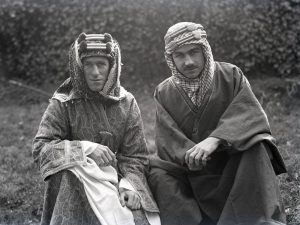
“Yep, that’s pretty much how it happened.” Words unpronounced by T.E. Lawrence & Lowell Thomas, London, 1918 (Image ©Marist College)
Above photo of “T.E. Lawrence & Lowell Thomas sit in London session portraits” 1918 courtesy of ©Marist Archives, in accurate historical context here.
In regards to style, the following statement might make anthropology textile experts cringe (they probably already left this page realizing we’re about to chop-off collectibles to turn them into “fashion” items anyways), but an amateur might point out visual similarity between certain Kilim traditional patterns and some of their hand-woven Native American counterparts. For the profane (that’s us), geometric symbolism such as tribal stripes, the famous Eye-Dazzler pattern, diamonds, stars, running water, or multicolor Anatolian Manastir motifs, do bring to mind works of early and contemporary Navajo or Pueblo weavers, and other skilled loom artists who contributed to the production of rugs and blankets of the American Southwest. The commun thread, we believe, is that commercially-produced traditional crafts of a specific ethnic group will inevitably evolve with outside demand, bartering, raw material and dye imports, foreign tastes and eventual cultural assimilation. Similar designs and symbols appear along trade routes, distant styles end-up overlapping, making cultural authenticity somewhat of a subjective concept with artisanal handicraft. So, expect an occasional “awesome Indian blanket jacket, dude!” comment, while sporting your MF® Lawrence.
After this colorful ouverture, and rather than sharing an uneducated opinion on current Arab affairs and oil barrel prices, here are a few highlights of our own saga with the MF® “Lawrence” production, for the insomniac few.
As often with USA-made projects we embark on, comes the moment we all look at each others at the HQ, with the same puzzling question: “Who the *%$#&* thought that was a good idea?” Even our intrepid MF® R&D Department expressed doubts during manufacturing…
First, we had to source the full grain veg-tan leather hides, all inspected one by one for grain, overall quality and feel. This is the same grade of leather we have been using since 2013 for the MF® Campus, and its Baloo successor. The hides are very light sensitive and initially almost ivory white, until exposed to natural daylight. The leather gradually sun-tans to a pinkish hue, eventually developing attractive golden tones.
Then, Hut, Hut, Hut, off we went on a hunting safari for vintage rugs!
We found a local Ali baba’s cave, the vault of a Pakistan-born textile expert, a gentleman specialized in legally-imported, well-documented antique oriental rugs. Going through dozens and dozens of stacked-up specimen, we focused on flat-woven Kilim rugs of the non-pile (flat weave) and non-slit family (no “openings” in the weave.) We carefully selected candidates from the first half of the 20th Century that aesthetically and technically qualified for the project. Each rug was hand-picked for its attractive geometric motifs, vintage appeal, fine color combination, unique hand-woven imperfections, occasional period hand-repairs and overall natural patina. These are woven from wool and cotton yarns, dyed in unstable, non-colorfast natural dyes, often leading to subtle color runs. This is part of their wabi-sabi charm, and the uniqueness separates them from Ikea’s versions. The kilim expert mentioned that, back home, these rugs served as wall-hanging decoration, blankets, home carpets, camel saddle covers…
Considering the latter, we took our loot to a professional cleaning facility specialized in antique rugs, an impressive old-school operation established in Los Angeles in 1926, a recommendation from our friend Channon at In The Field. We had each rug thoroughly hand-brushed, hand-washed and sun-dried, without the use of machines, quite a costly procedure, almost doubling the cost of each vintage piece!
Came the time to unroll the freshly-clean rugs back in our atelier, and figure-out how to turn them into front panels of jackets… To strategically cut according to each rug design, while trying to envision each finished jacket with well-balanced panels, we thought of making our pattern paper out of clear PVC.
It soon hit us that there is nothing remotely symmetrical in a nomadic tribal rug, hand-woven on an horizontal floor loom, somewhere in a remote mountainous region of Pakistan, some 80 years ago. Eye-balling seems to be the golden rule in metrology for the Rug Belt artisans.
After a few hours of deliberation, positioning and repositioning the pattern markers, we traced panels on each rug, combining sizes and grain direction. We then painstakingly fused the panels with high-quality woven cotton fusing, using an industrial steam iron. We, of course, chose to do this during the hottest months of summer, to fully embrace the benefits of facial steaming.
Each panel was then cut using electric shears, somewhat of a liberating experience, and carefully overlocked to avoid later fraying of the edges.
After completing this portion of the hands-on production, we resumed our water-skiing activities and badminton tournaments. The MF® atelier’s contribution was temporarily over! The jackets themselves, however, still had to get made…
We happily passed the hot potato to a local facility, who, in-turn, couldn’t wait to throw it back at us. The factory’s expert craftsmen had never worked on such a “fun” project, involving new leather and eclectic vintage textiles. Most places would have turned us down, so we are indebted to our small manufacturing source for accepting the challenge. After a few months of intricate and complicated assembly work, production management headaches and anxious back-and-forth, our Lawrence Jackets were ready! Ready, that is, for the final touch back at the MF® HQ: hand-sewing hundreds of corozo double buttons, which gets old after about five.
We are, many months later, proud to announce our one-of-a-kind and once-in-a-lifetime MF® “LAWRENCE” jackets! We hope you enjoy the finished product as much as we got our kicks during the manufacturing fantasia!
As one will guess from the making-of collage, the yield (number of panels per rug), selection of sizes cut per rug, and geometric design variations per panel within each rug, all got out of control pretty quick. We had realized early-on that no-two jackets were going to be the same, making the MF® Product Photography Department quiver in anticipation of this post.
For inventory purposes, we have regrouped the MF® Lawrence jackets in eight families (called them caravans), according to the specific vintage Kilim rug they were cut from (Caravan A, B, C, D, E, F, G, or H). Not every rug yielded a full size scale, and availability of the MF® Lawrence jacket will be limited to this FW2018 batch.
DISCLAIMER:
* VEG-TAN LEATHER: The Mister Freedom® Lawrence Jacket is cut from genuine leather. We use full-grain, and not “top-grain” leather (aka corrected or buffed leather, sanded to level surface inconsistencies). No two hides are alike and each panel may feature variations in texture along with natural imperfections.
* The occasional nicks and marks on the hides we select are characteristic of pasture-raised cattle, with the implication of natural scarring from roaming and being in contact with other animals. Considering the obvious perks of outside grazing for the cattle, vs. confined indoors or in pens as required for the production of some luxury leather goods, we find these natural imperfections to be perfectly acceptable, if not a desirable trait of a Mister Freedom® leather garment. These “life” marks are inherent to full grain leather, and will blend into a natural patina when our jacket is worn, conditioned and lived-in.
* Early signs of tanning of panels may, at times, be visible on a finished garment, as we pay premium to have our leather goods produced in a pleasant, well-lit, clean and ethically-run California facility. We’ll leave the dark, un-safe, regulation-evading basements where less-fortunate workers toil, to less-regarding fast-fashion labels catering to the modern consumer’s insatiable appetite for “affordable” disposable goods. In other words, we do not consider a new jacket with partially-suntanned panels a defective garment.
* RECYCLED KILIM RUGS: The front panels feature genuine vintage kilim rugs/blankets that are about 70 to 90 years old. These can show signs of wear and natural patina, color fading and crocking, woven imperfections and unevenness, design pattern asymmetry and occasional rugged hand repairs. Due to Mister Freedom®’s background in vintage clothing, we consider these imperfections desirable. These natural flaws are inherent to up-cycling projects, such as turning antique textiles into new unique garments, still fit as wearables for next generations.
Thank you for your understanding.
The MF® LAWRENCE Jacket is designed by Mister Freedom® and manufactured in USA, from USA-sourced hides and up-cycled genuine vintage Oriental rugs of the Kilim family.
SPECS:
PATTERN:
Inspired by 1930’s “Grizzly” type leather jackets, and other vintage American sportswear and outdoor garments, and somewhat by the 1962 film “Lawrence of Arabia”.
The original MF® Lawrence jacket pattern is adapted from our MF® Baloo jacket pattern, in turn adapted from the MF® Campus jacket.
MATERIALS:
* Shell: Vegetable tanned leather, full grain cowhide, milled and supple, natural finish and color, about 2-3 Oz weight, sourced in USA.
* Front panels: Up-cycled vintage Oriental rugs of the Kilim family, with a probable provenance in Pakistan and surrounding regions.
* Lining: 100% cotton brushed flannel with a 1940’s-50’s-inspired vibrant plaid pattern, discharge-printed. Fabric milled in Japan.
DETAILS:
* Vintage 1930’s style, inspired by cossack-type and Grizzly-type panel leather jackets.
* Fully lined with a soft cotton brushed flannel featuring a vintage style discharge-printed plaid pattern.
* Front panels cut from a vintage genuine Oriental Kilim rug.
* Full single panel veg-tan leather back.
* Slash pockets with arrow-head pocket stops.
* Side gussets with adjustable side straps (NOS metal slide buckles)
* Keyhole button holes.
* Corozo ‘Cat Eyes’ wood buttons, backed by vintage-style corozo wood “cat-eyes” buttons.
* Mister Freedom® woven “Sportsman” label.
* American-sourced hides.
* Limited Edition. Each jacket is a one-of-a-kind collectible.
* Made in USA.
SIZING:
The MF® LAWRENCE Jacket is true to size. I am usually a 38 in mfsc jackets and opted for a 38 in the MF® LAWRENCE, with enough room for a lightweight layer underneath.
The fit is relatively snug, so we do not advise sizing-down on this garment if you are in-between sizes. If planning on layering with heavy cable knit wool sweaters, consider sizing up in order to be able to comfortably button-up the jacket.
Refer to sizing chart below for approximate measurements. Please consider the thickness of the leather/Kilim/lining when trying to match your chest measurements and the jacket’s measurements. If still in doubt, please contact sales@misterfreedom.com with your specifics for recommendations.
CHART
CARE:
We recommend wearing the jacket as-is. No specific initial conditioning or pre-treatment is required. Just wear and enjoy witnessing the natural ageing and patina evolution.
According to frequency of wear and exposure to the elements, some light conditioning might be applied to the sleeves after months of continuous wear, using products similar to Pecard Antique Leather Care. Be aware that conditioning will darken the leather, and should only be applied with care and expertise.
* Do not dry clean. Even professional leather cleaning facilities might not be competent on how to treat the specific LAWRENCE jacket veg-tan leather/woolen woven rug/cotton lining combo.
* Do not use heavily-oily products designed for footwear, such as neatsfoot oil.
* Do not attempt to “wash” the Kilim woven panels. Use a dry, plastic bristle brush for cleaning if needed.
* Should leather parts of your jacket get accidentally stained from normal wear, consider this a normal stage of the evolution of an outdoor garment. As often witnessed on well-worn vintage leather jackets, wear, stains and scratches will eventually blend-in into the most attractive and unique patinas.
Available NATURAL.
Sizes
36 (Small)
38 (Medium)
40 (Large)
42 (XLarge)
44 (XXLarge)
Front panel styles/patterns: regrouped in eight kilim families/caravans: A, B, C, D, E, F, G, or H.
Not every rug yielded a full size scale, and size/style/pattern availability is limited to this FW2018 batch.
Not all jackets were photographed, but each caravan grouping is representative of the available selection.
Note on inventory: Each jacket is numbered on the collar loop (example 38G1). The letter in the code does indicate the specific rug, but, due to the similarity in some of the woven designs, some jackets have been attributed to the wrong kilim rug during the numbering. For instance, the Lawrence jacket 40F3 is actually cut from Kilim D and should have been marked 40D3. Its photo file was renamed 40F3d, but the jacket itself was not re-branded on the collar loop.
Available from www.misterfreedom.com, our Los Angeles brick & mortar store, and fine retailers around the World.
Email sales@misterfreedom.com or call 323-653-2014 with any questions unanswered above.
Thank you for your support.
Christophe Loiron
Mister Freedom®
©2018
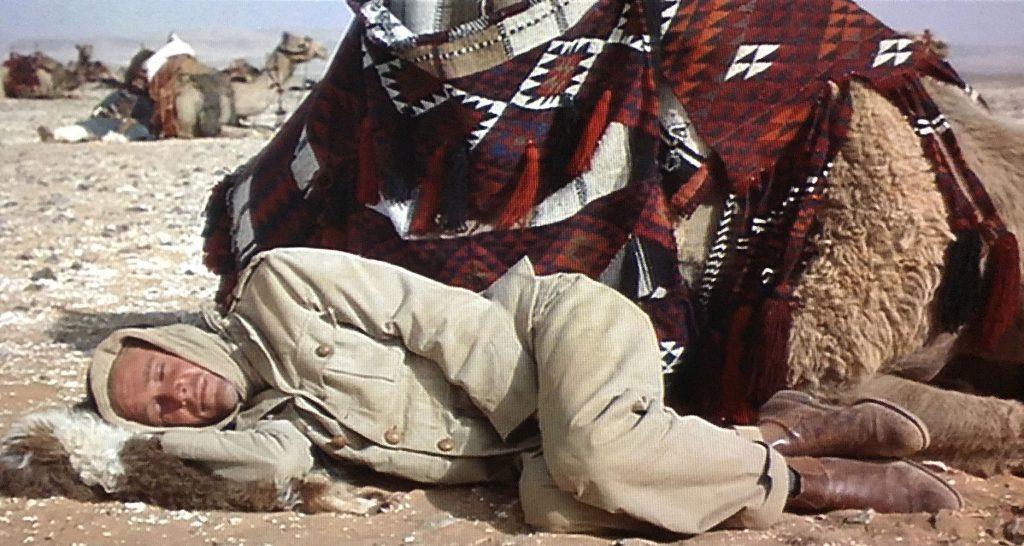


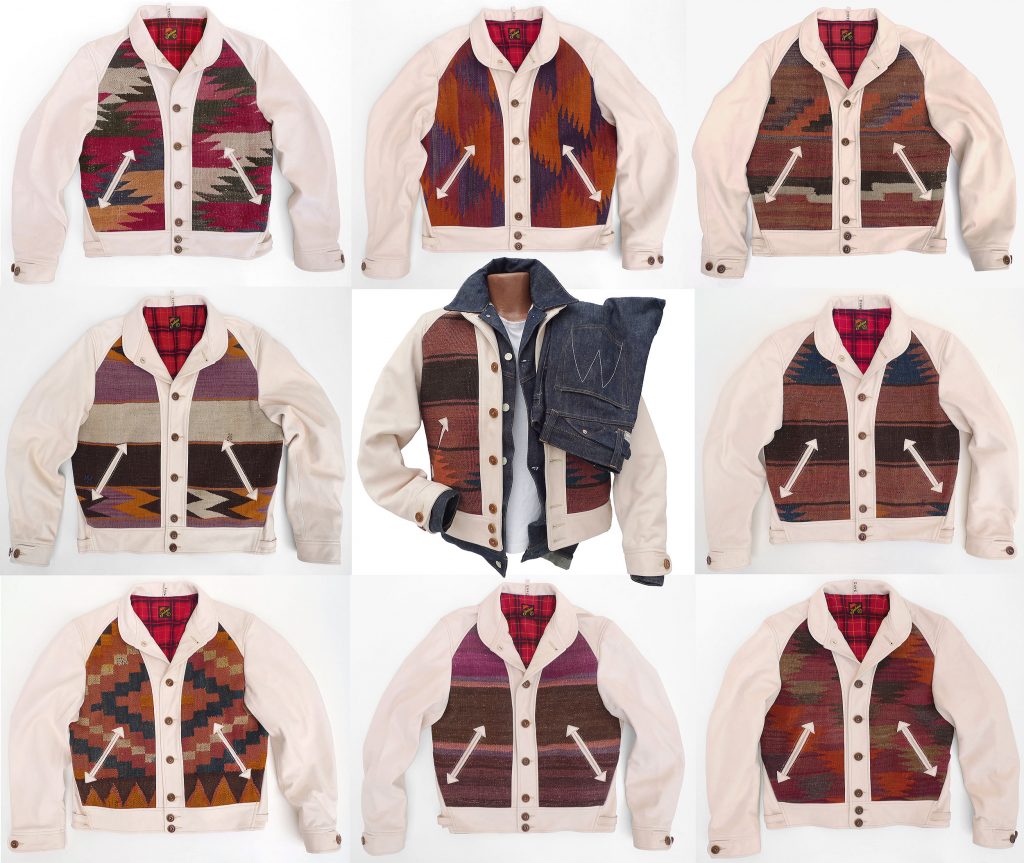

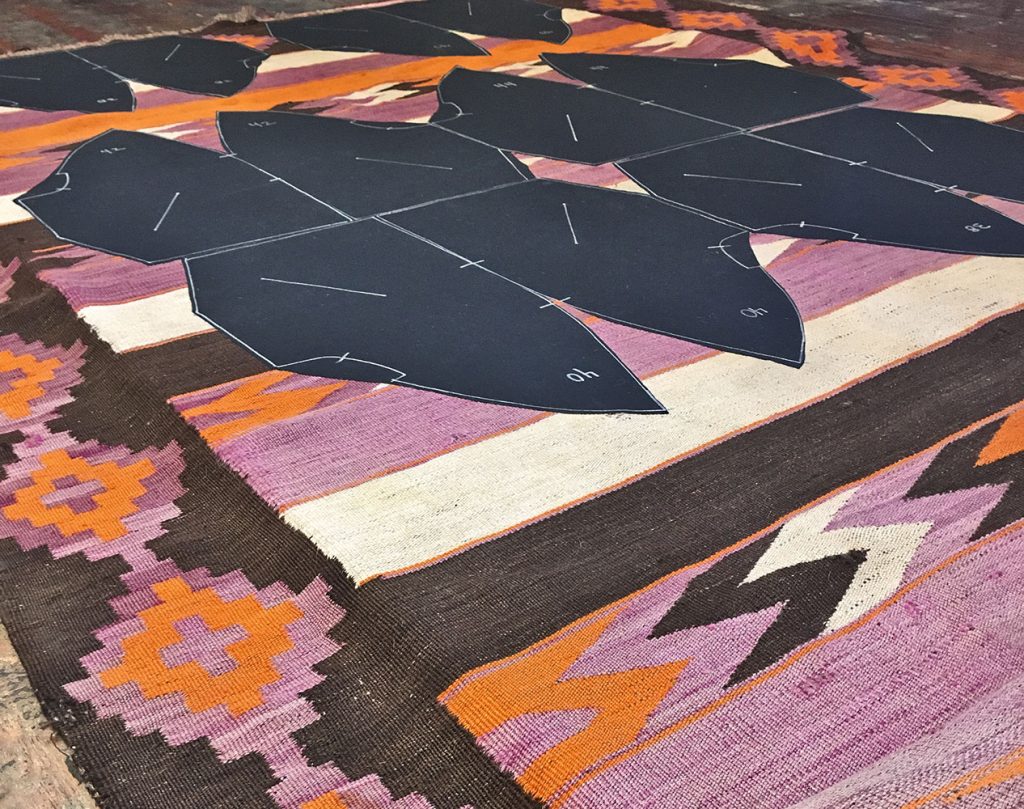
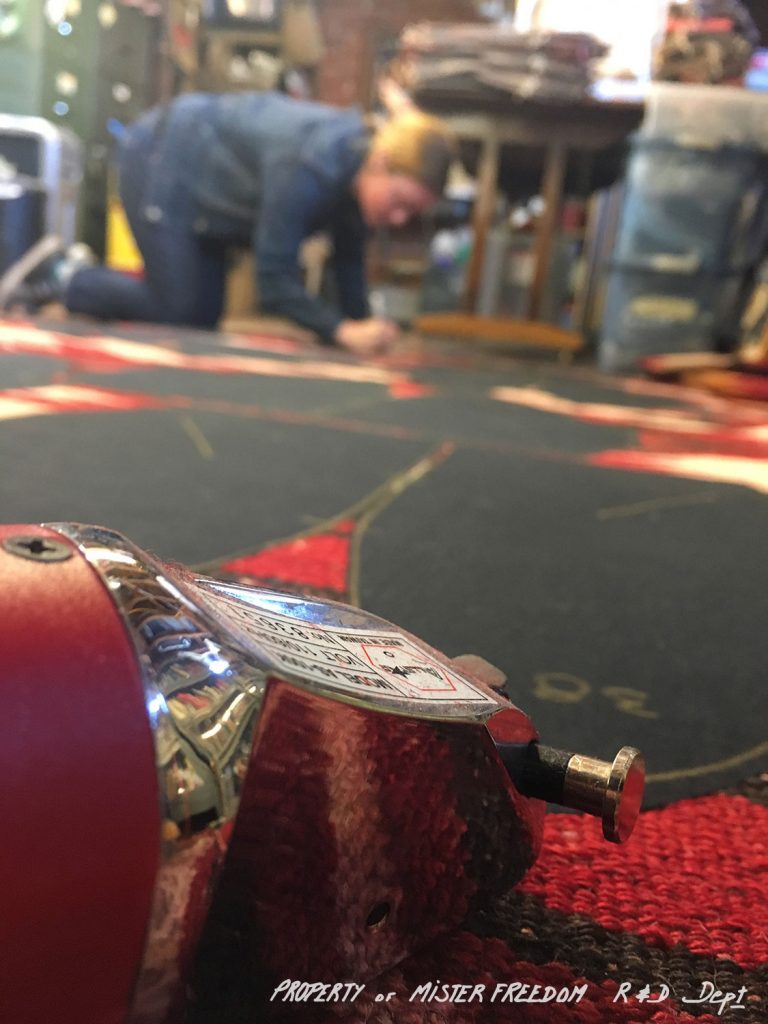
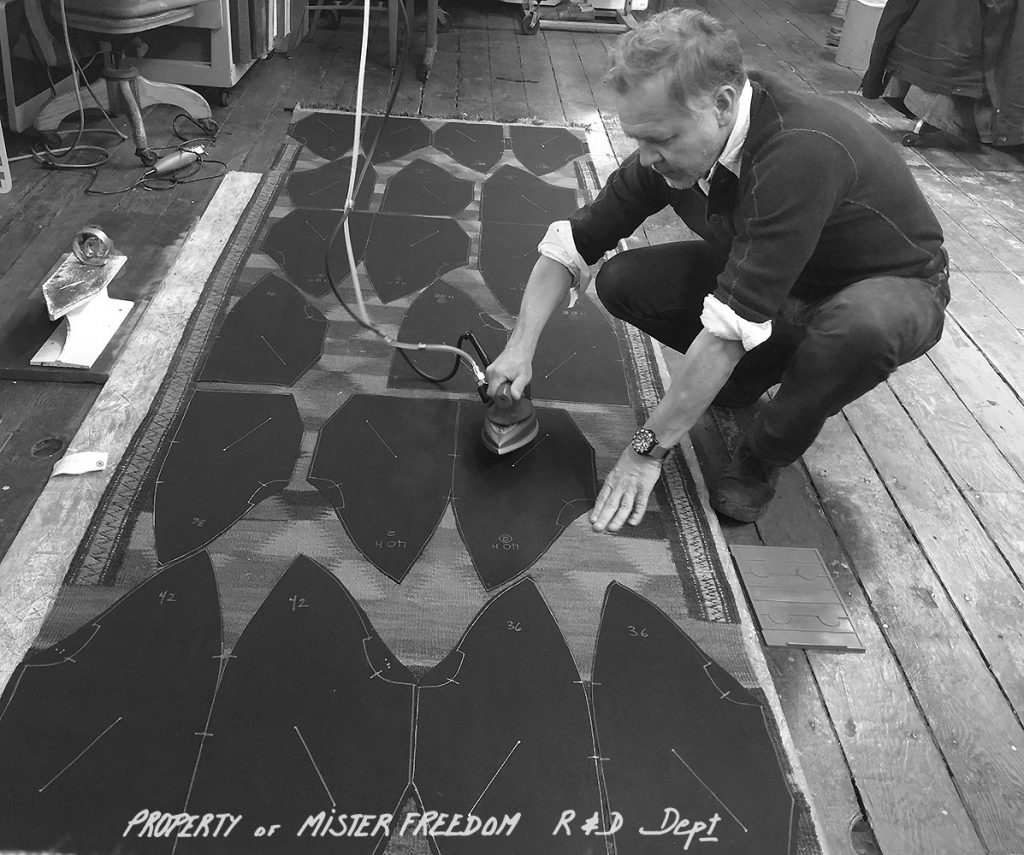
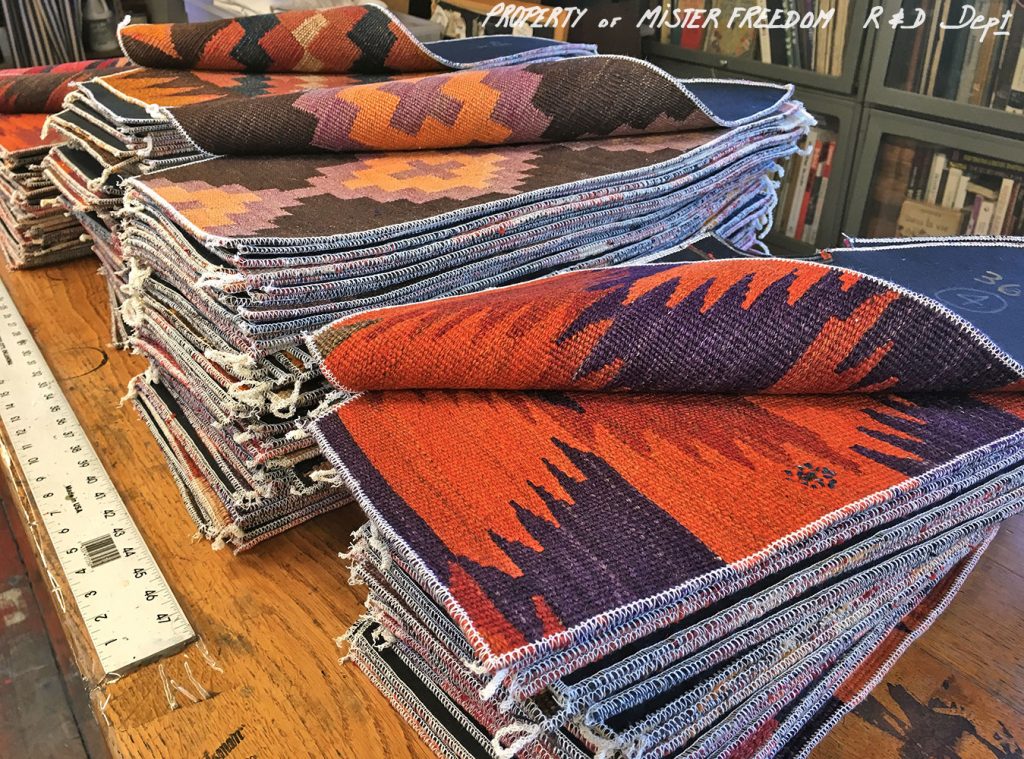
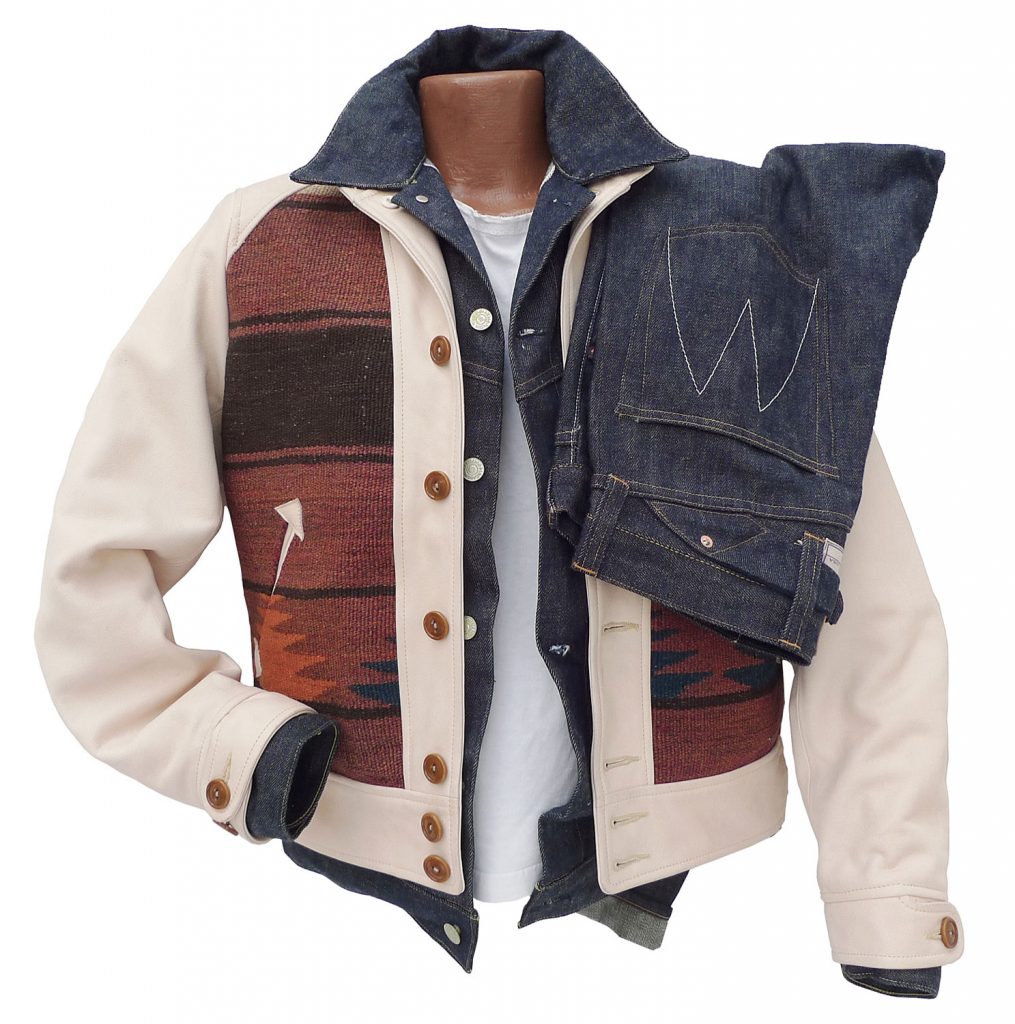
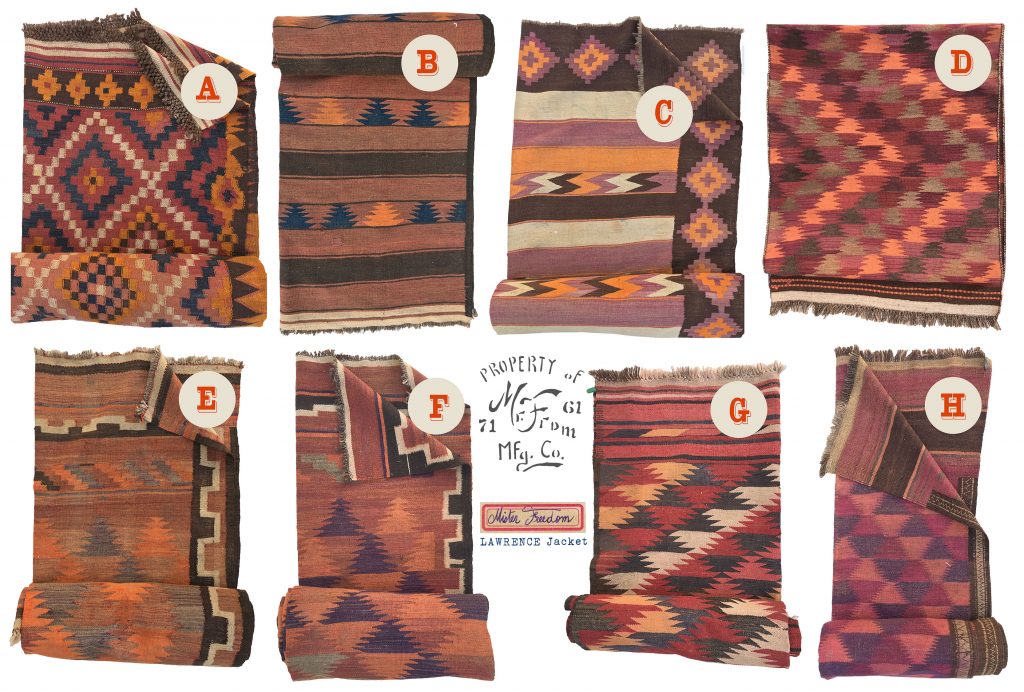
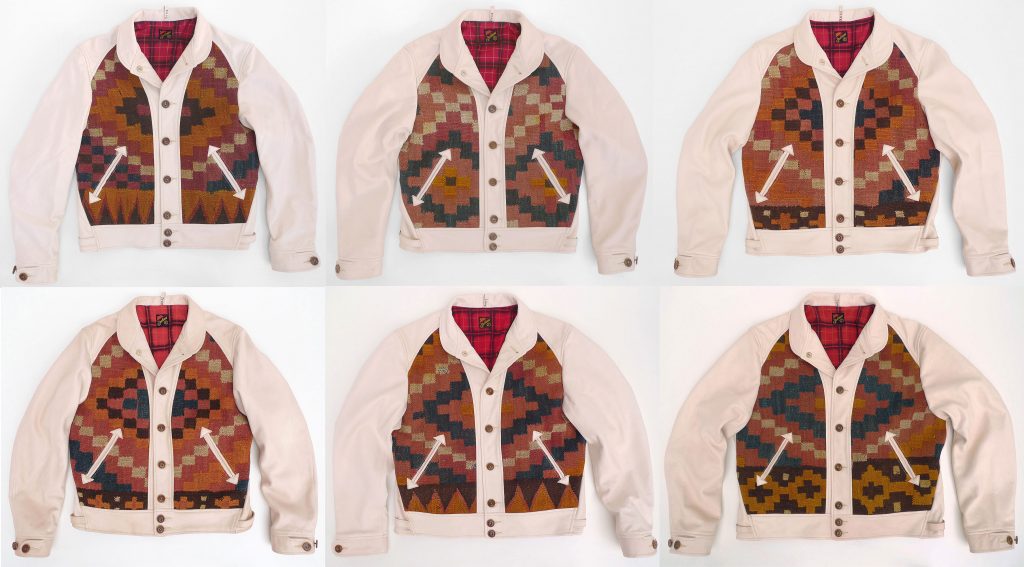
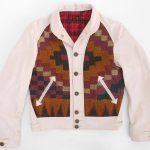
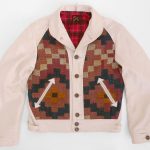
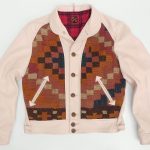
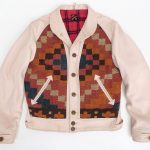
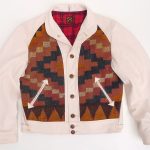
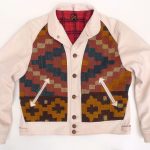
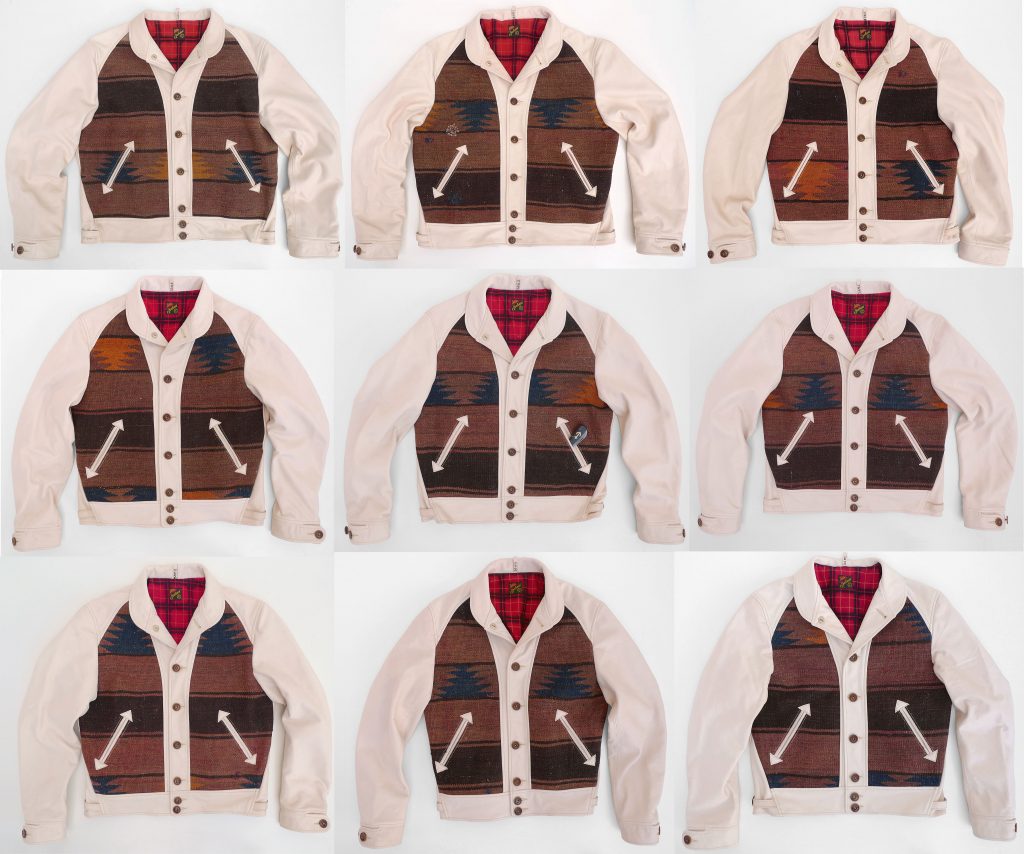
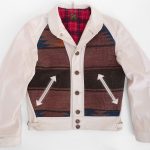
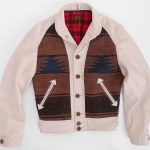
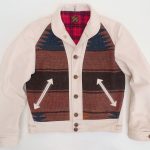
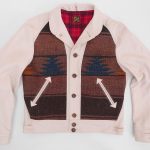
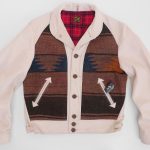
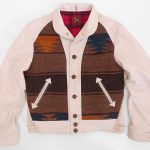
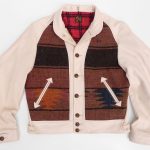
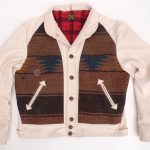
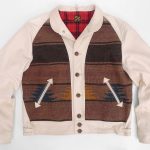
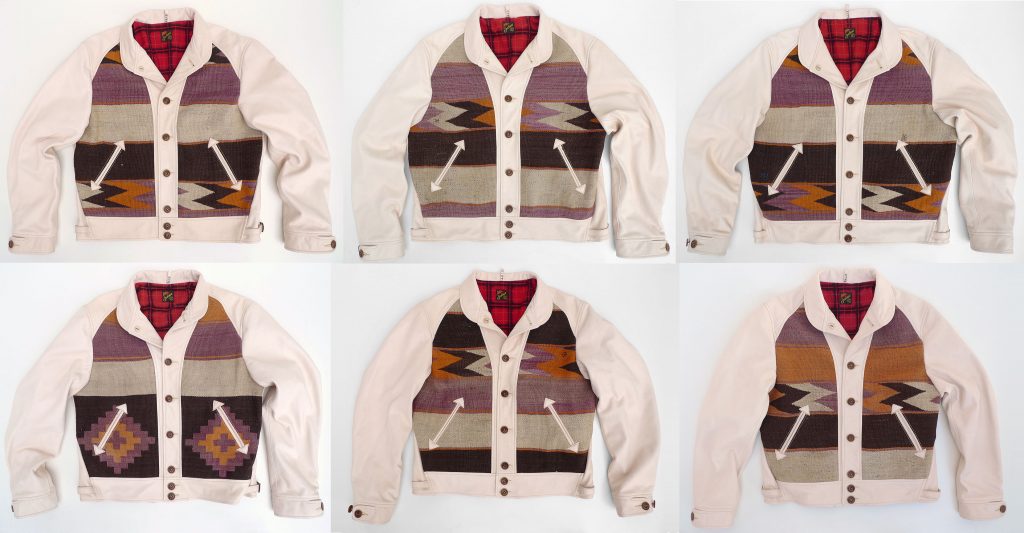

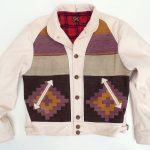
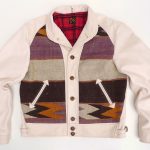
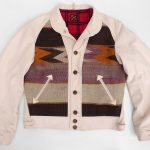
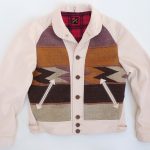
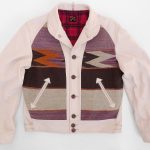
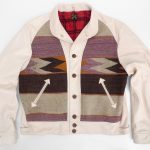
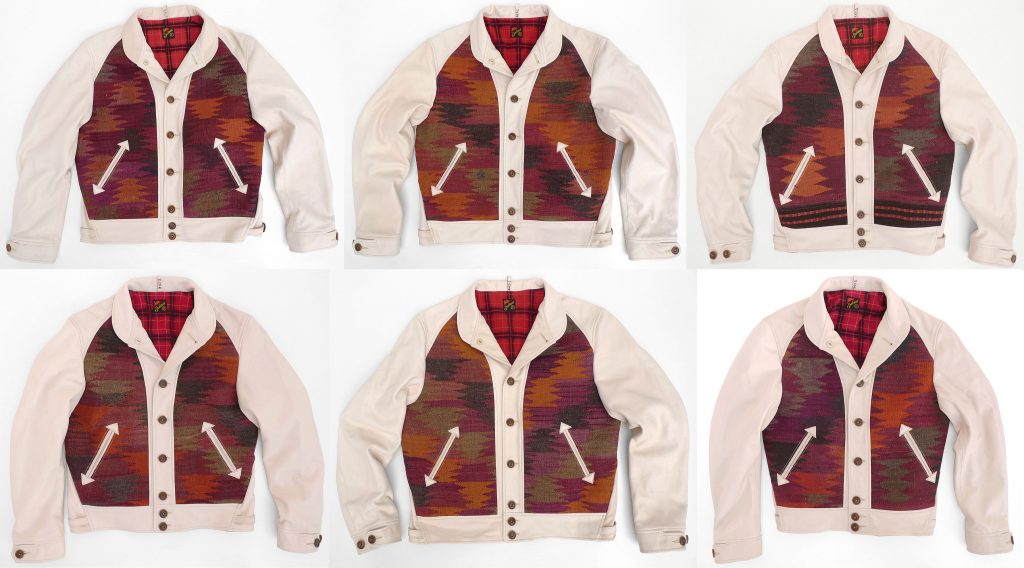
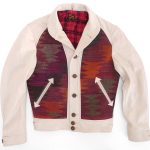
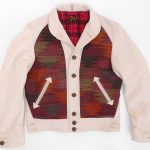
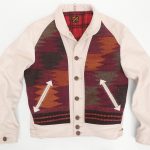
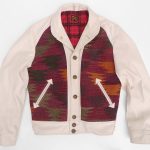
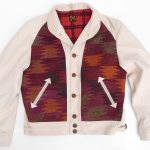
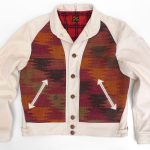
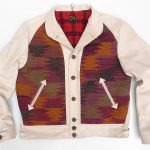
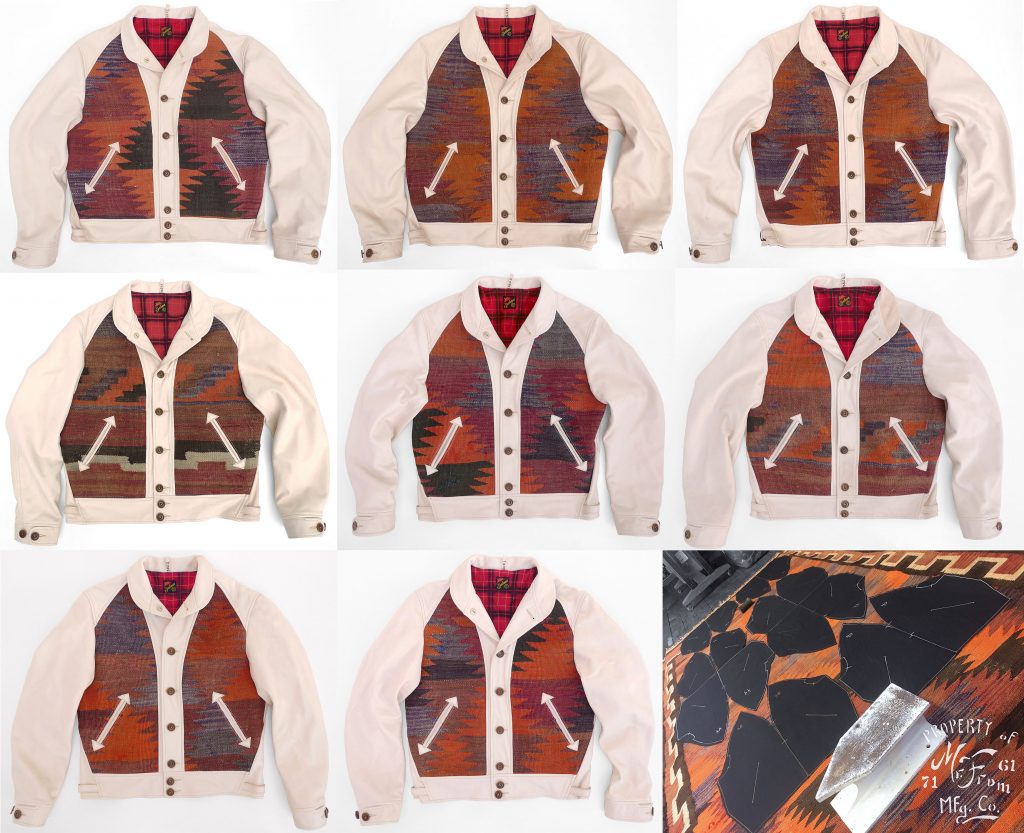
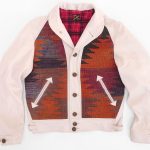
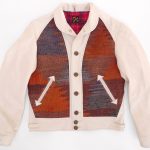
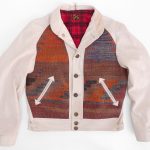
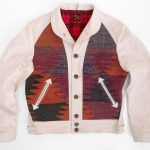
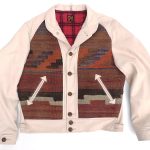
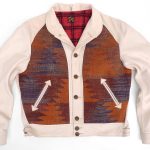
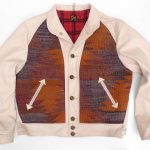
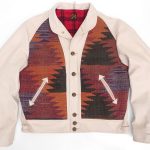
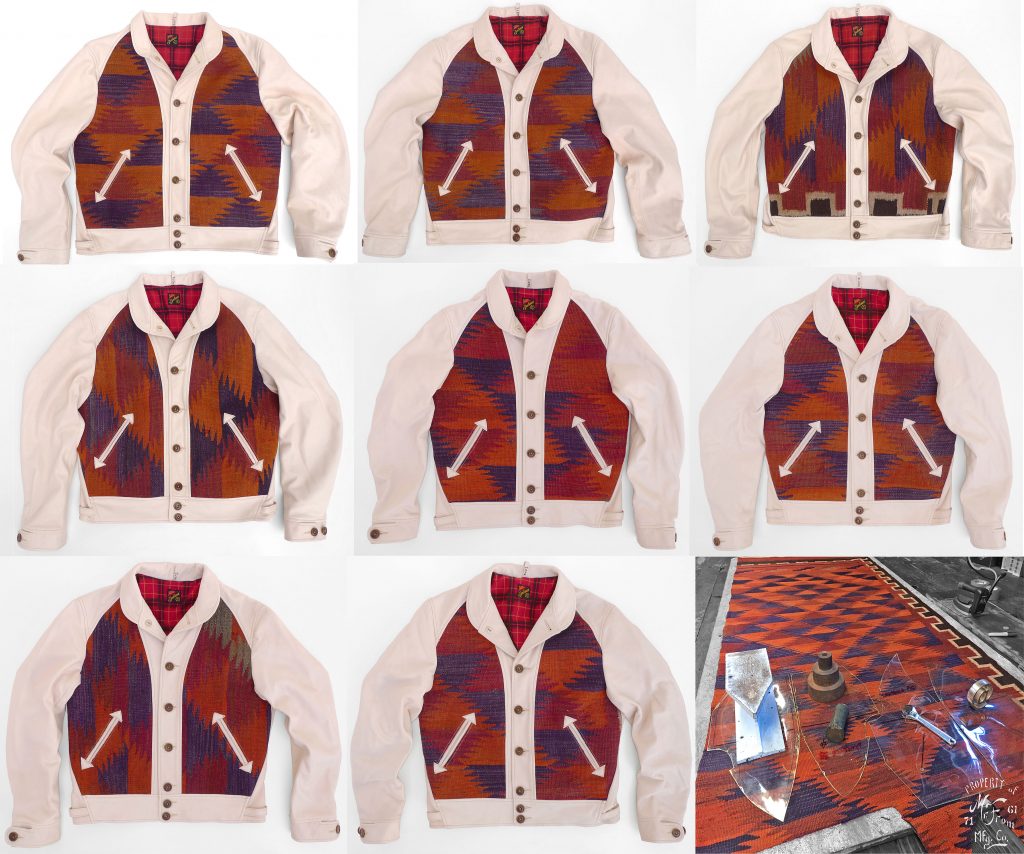
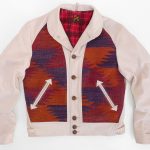
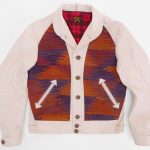
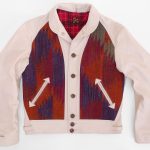
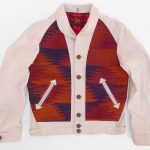

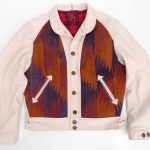
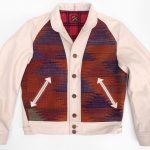
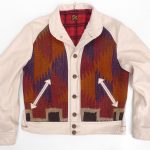
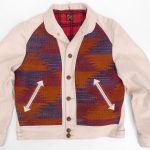
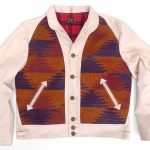
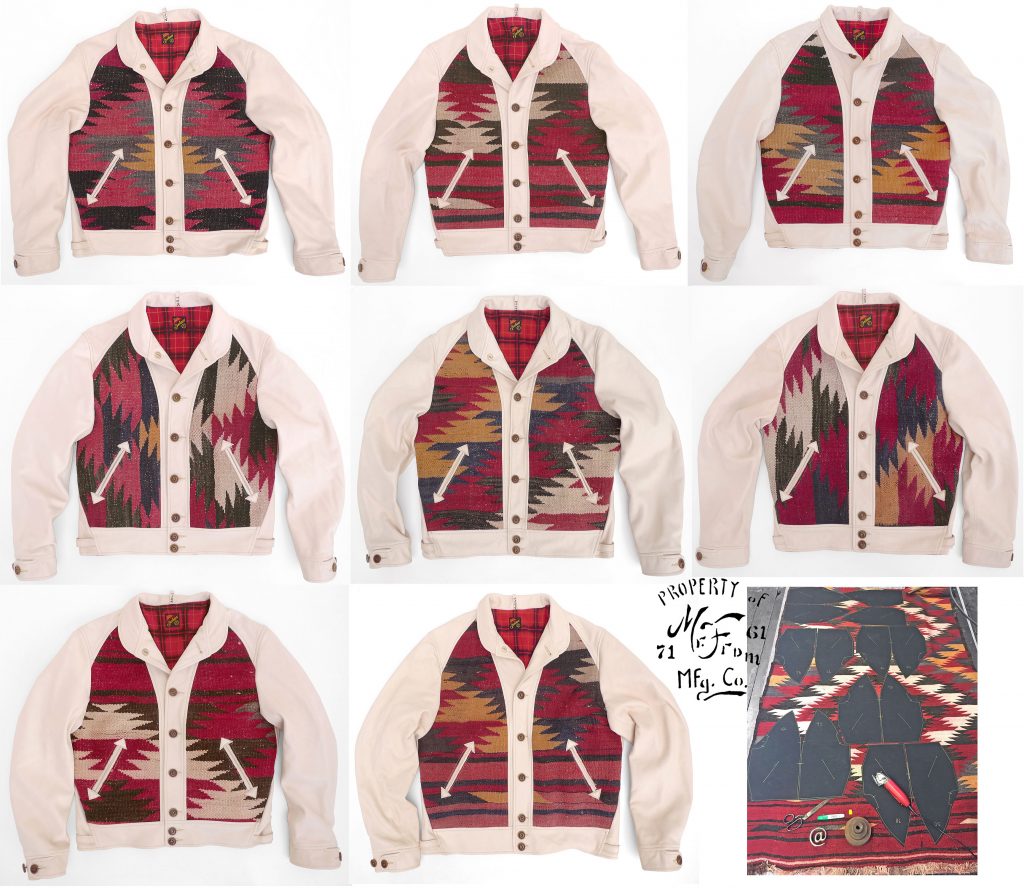
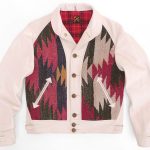
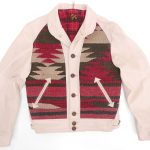
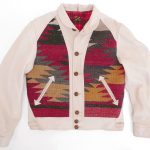
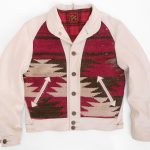
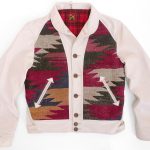
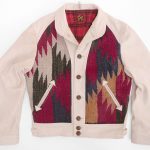
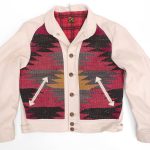
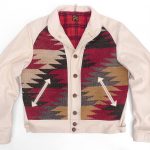
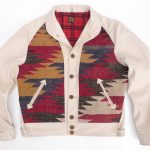
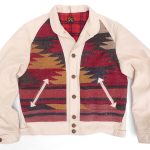
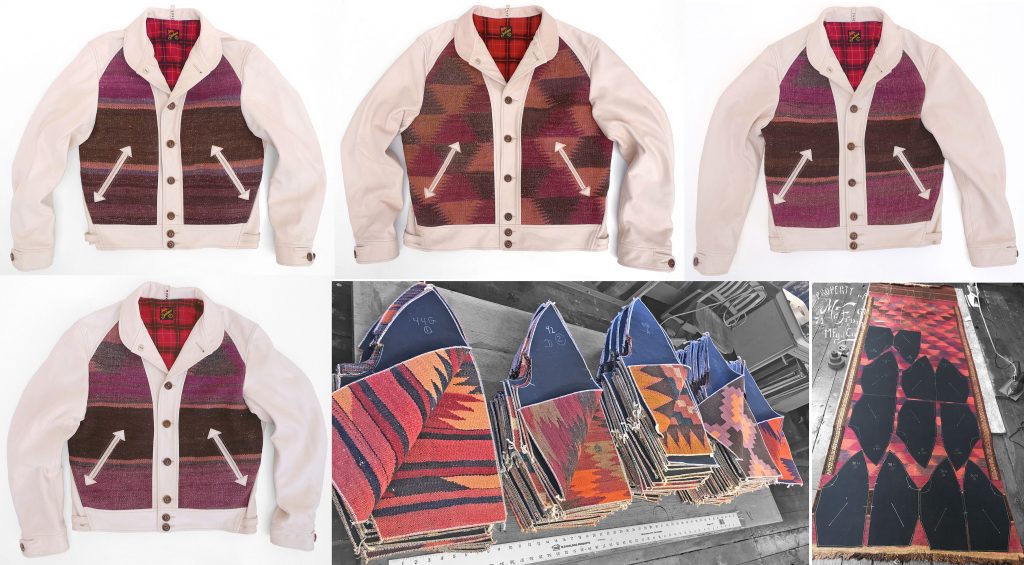
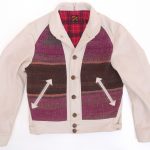
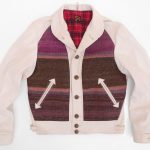
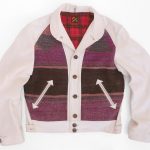
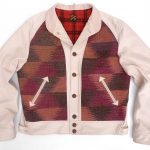
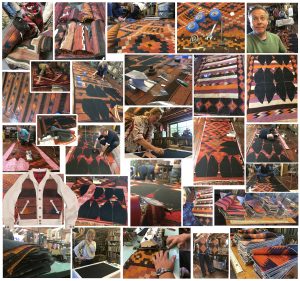
Leave a Reply
You must be logged in to post a comment.